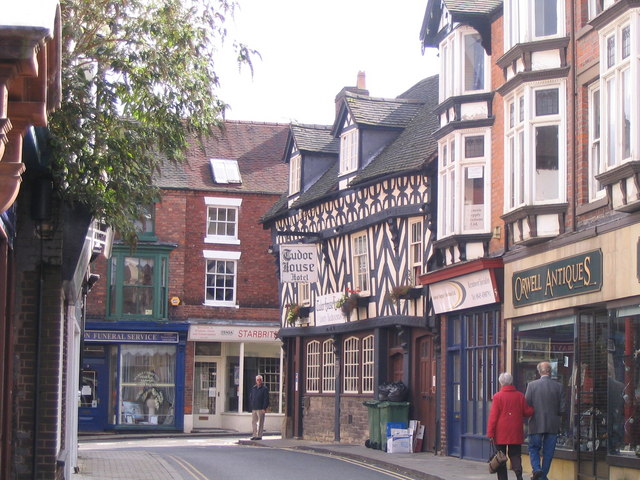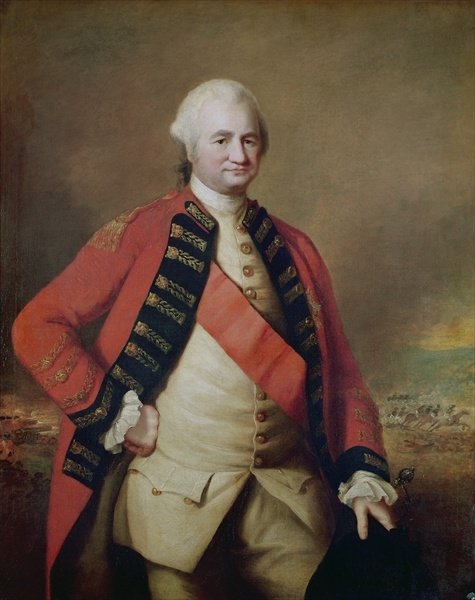Monday 26 November 2012
Digital Hearing Aids Nantwich – Digital Hearing Aids Cheshire
Digital Hearing Aids Nantwich – Digital Hearing Aids Cheshire
Whilst hearing impairment is an almost inevitable ‘side-effect’ of getting old, it’s not the only cause. Working in a very noisy environment can cause damage to our auditory system and now Health and Safety ensures that mufflers are worn to protect workers. Although this wasn’t always the case.
Not so when listening to or working in the modern music industry with all its electronic gizmos. Although there is no exact proof of this, statistics for impaired hearing of those below 18 virtually doubled in the 15 years between 1992 – 2007 according to the NHS. Could this be linked to continued subjection to loud music?
Pete Townshend of The Who admits to suffering partial deafness and tinnitus and considers it is due to working for many years with loud music. The band played the loudest concert recorded to date in 1976. So loud it went in the Guinness Book of Records. Of course it has been beaten to the loudest performance accolade many times since. Fortunately when the Who played in Nantwich on their year-long tour in 1969, it didn’t break any sound barriers.
So peeps of Nantwich if any of you are suffering hearing loss or think you might be, whatever the reason or cause, get in touch with Castle Hearing Aids to see how we can help. You can call us on 01782 69 80 90.
All about Nantwich
Like its neighbour Northwich less than 20 miles away, this pretty market town was big in salt production and a mecca for this commodity when the Romans had their settlement at Chester. By the time of the Domesday Book, Nantwich had 8 salt houses. This grew to 400 in Medieval Times when Nantwich was probably the second most important town in the area after Chester. Salt production continued up until the mid 19th century. It was also used in 2 other industries in the area, tanning and cheese production.
Interesting how fate and history changes things. Today Northwich is about a third bigger than Nantwich population wise.
Nantwich was important enough to feature on the Gough Map, the oldest route map in existence dating from the mid 14th century. It later maintained its importance as one of the main coaching routes from London to Wales and Ireland. During the earlier invasion by the Normans, the town had been burnt to the ground by them leaving just one building standing. The Normans built a castle here before the end of the 12th century next to the River Weaver. No castle remains today though its site is probably under the Crown Inn in today’s town. The Castle was influential in how the town was laid out. By the end of the 14th century Nantwich was important for its tanning industry which also used salt and had a weekly cattle market.
The next big event in Nantwich’s chequered history was the 20 day fire in 1583 which left just one building standing in the town, Churches Mansion. History says that Elizabeth I supported the rebuilding of the town by donating £1,000 worth of timber. The traces of this are still clearly visible in the timber framed houses throughout Nantwich.
The Battle of Nantwich
During the Civil War a battle between the Parliamentarians under Sir Thomas Fairfax and the Royalists led by Sir John Byron, took place on 25th January 1644. The Parliamentarians won and thwarted King Charles I attempt to have a stronghold in the North West.
The Battle is still celebrated to this day in Nantwich. Locals call the day Holly Holy Day and the English historical association, The Sealed Knot performs a re-enactment.
Historic Buildings
This town has one of the largest collections of historic and listed buildings in the county after Chester. Most of these are in the centre of the town which is now a conservation area. This area follows the boundaries of the old medieval town.
Grade I listed St Marys Church is the oldest building in the town and also thought to be the oldest medieval church in England. Details include a Lierne vaulted ceiling similar to the one in Chester Cathedral, amazing carvings on canopies over the choir stalls and 20 misericords. These are small wooden shelves below the fold up seats. They are sometimes referred to as Mercy Seats and were installed for those who had to stand for long periods during a service.
Churches Mansion was built by Thomas Cleese in 1577 for the merchant Richarde Churches. It remained in the Churches family for 350 years before being let to tenants and finally sold. In latter years it has been a restaurant and is currently the home of Adams Antiques.
Once a coaching inn in much use by those travelling to or from Wales, The Crown Inn is also Grade I listed.
As well as the medieval timber-framed buildings, Nantwich also has some good examples of Georgian architecture such as the Dysart Building, actually a terrace of 9 houses. These can be found in Monks Lane and are Grade II listed. Similarly listed is Townwell House, also Georgian in origin. The latest building to receive a listing is a 17th century French Baroque style one at 1 – 5 Pillory Street. The building was actually built in 1911; reference is made to its curving corner and its porthole-like windows in the roof considered a tribute to the Lusitania liner, which had been built a few years beforehand. The building was built for a local grocer and is currently a furniture store.
Cheshire Cheese
Cheshire Cheese is the oldest cheese in production in England, first mentioned in the 16th century. Typically it is semi-hard and crumbly and takes about 4 – 8 weeks to harden. By the 18th century about 12,000 tonnes was produced each year; the Royal Navy used it as a ship’s provision. It was aged for longer too so that the cheese was harder and better able to withstand long journeys by road and ship to London for resale.
Every year Nantwich hosts the International Cheese Awards for 2 days at the end of July. This show has global participation and is the largest of its kind in the world. It attracts 3,700 cheese entries and 40,000 visitors.
Attracting celebrities
Nantwich has done its fare share of attracting celebrities hosting a charity football match earlier this year with stars from TV including Emmerdale’s Danny Miller and Lyndon Ogbourne, Eastenders’ Matt Lapinskas, Elliott Tittensor from Shameless, Hollyoaks’ James Sutton and Ben Ryan Davies from Waterloo Road. Others including Ray Francis, Anthony Hutton, Marvyn Williams and Danny Young also put in an appearance. The charity was Once Upon a Smile.
Two years ago the town hosted a session of Celebrity Masterchef that was filmed at Mill Island.
Before that in 2007 the series Most Haunted: Midsummer Murders visited 2 local locations in an attempt to solve 2 separate historic murders at Hack Green Nuclear Bunker and Churches Mansion.
Local celebrities include the 19th century architect George Latham, 19th century surgeon Sir William Bowman, poet John Milton’s 3rd wife Elizabeth Minshull, Joseph Priestley theologian and chemist who discovered oxygen, 17th century botanist John Gerard and Dario Gradi, Crewe Alexander football manager.
Calling all Dabbers
Yes a Dabber is someone from Nantwich thought to have its origins in the local shoe making trade.
If you are ready to acknowledge that you might be a little hard of hearing, it’s time to take the test. We can offer free hearing tests with a professional audiologist. The test is simple. Just a matter of wearing ear phones and having each ear tested for its ability and level of hearing.
Digital hearing aids, a real development from their analogue ancestors, can make a vast improvement to your ability to hear although they will take a little time to get used to. Once you’ve got them you’ll wonder why you didn’t get them earlier. And not only will it make your life easier, but it will also improve it for those around you who won’t need to keep repeating themselves!
Want more information? Take a look here and give us a call on or send us a message using this form.
Thursday 22 November 2012
Digital Hearing Aids Northwich – Digital Hearing aids Cheshire
Digital Hearing Aids Northwich – Digital Hearing aids Cheshire
Northwich is one of the Doomsday Wiches. The others are Middlewich and Nantwich also in Cheshire and Droitwich in Worcestershire and all were mentioned in the Doomsday Book. The suffix wich or wyche attached to a place name denotes that there was some ‘special function’ or production in the town. Salt is one of these ‘special functions’ and Northwich has a long relationship with salt!
How did you hear about that?
Yes you did hear us correctly, Doomsday wiches and salt. It all sounds a bit make-believe doesn’t it? But it’s the truth about this pretty market town.
If you live here or in the surrounding area and are reluctant to accept that you might have a problem with your hearing, don’t panic. We offer free hearing tests with a professional audiologist. In fact accepting you have a problem no matter its cause, is one of the first steps you need to take. Once you’ve done that, getting your hearing tested takes you closer to making life easier again at work and socially. And makes life easier for those close to you or who have to work with you too.
Digital hearing aids are a step up from analogue ones and should improve your hearing impediment. They may take some getting used to, but persevere as it’s worth it. Want to know more, take a look here.
Remember being hard of hearing, whatever the cause, is nothing to be ashamed of and can happen to anybody at any age with a variety of causes. If you’d like more information either call us on 01782 69 80 90 or complete our enquiry form, which you can find on our website.
The effects of salt
It was the salt pans in the area that made it important to the Romans. The salt beneath Northwich wasn’t discovered until the 17th century when the Smith-Barry family were searching for coal!
In history generally salt has always been an important commodity. It preserved food and could be used for healing. It is thought that Roman soldiers were often paid in salt. The Latin word ‘salarium’ is thought to refer to payment of soldiers and is the word that salary is derived from.
After the discovery of salt beneath Northwich, mining began and went on for hundreds of years. By the 19th century it had become uneconomical to collect salt this way and a technique of filling the mines with hot water to dissolve the salt and retrieve as brine was put into use. This resulted in destabilising the mines and caused massive subsidence for the town and the surrounding area.
As a result of this subsidence a number of flashes (pools) and meres (shallow lakes) were formed. It is thought that the timber framed buildings that survive in the town did so because they were more resilient to movement than their brick counterparts.
The Weaver Hall Museum, once the local workhouse, tells the story of salt in the area as well as the area’s broader history The original salt museum was set up by two salt proprietors, Thomas Ward and John Brunner, in the 19th century when Northwich was ‘the salt capital of the world’.
Knock-on industry
Brunner founded a soda ash production company called Brunner Mond with colleague Ludwig Mond. The company was based in Winnington near to Northwich. Statues of both men stand outside the research centre at the works. The production of soda ash used salt as its raw material and the subsided land was used to dispose of waste from the production producing dangerous lime beds. As a result the land was deemed unusable.
The chemical industry was attracted to the area on the heels of the salt production. So as well as Brunner Mond (now Tata Chemicals Europe), ICI opened three sites in the area at Winnington, Wallerscote and Lostock. It was at Winnington that the production of polythene was accidentally discovered in the 1930s.
In recent years the unusable land has been reclaimed and the Marbury Country Park and the Northwich Community Woodlands have been developed. Both are open to the public and popular recreational areas. Four of the old salt mines have been stabilised: Baron’s Quay, Witton Bank, Neumann’s and Penny’s Lane.
Getting around the area
The Romans called Northwich Condate meaning confluence probably due to the merging of two rivers, The Dane which flows into the Weaver in the town. The rivers were obviously good for trading and a means to carry the precious salt to other markets. When the Trent and Mersey Canal opened in the 18th century, much concern from the river’s trustees ensured it followed a path north of the town. Even so it passed salt production sites on its banks and a few years later the Anderton Boat lift was built to connect the two water transport routes. There’s a visitor Centre at the lift now for visitors who want to know more about it.
Several roads around Northwich follow the original roads set out by the Romans.
Of course whilst all this production was going on, the population of Northwich grew and people needed homes and other facilities. Northwich is still home to many amazing protected buildings.
Listings
· St Helen’s Witton is a Grade I listed building which dates from the 14th century. Even its sundial bears the Grade II listing
· Two other churches in Northwich carry Grade II status – Church of St Winifred and Church of the Holy Trinity
· The Weavers Hall Museum is a Grade II listed building
· The magnificent Town Bridge which dates from 1899 and is one of two swing bridges in the town – the first two ever to be operated electrically. Town Bridge is also Grade II
· Several other bridges and locks also bear Grade II status
· The magnificent timber framed Winnington Hall is not surprisingly Grade I listed. It was built for the Warburton family in the 16th century. In the 19th century it became a girls’ school for a time, hosting recitals by Charles Halle and boasting art lectures by John Ruskin. Later the whole estate was bought by Brunner Mond and both families lived in the Hall. Now the building houses a series of offices
· Many of the residences on Dobell’s Road are Grade II listed too
Who do you recognise?
Singers and bands from or with connections to Northwich include:
· Gary Barlow of Take That and now X Factor judge
· Tim Burton of the Charlatans
· Steve Hewitt one time drummer with Placebo hails from Northwich
· Harry Styles of One Direction lived in the area at one time
· Northwich was one of The Who’s locations on their non-stop UK tour in 1966
Actors/TV personalities
· Jennifer Saunders, originally one half of French and Saunders and now successful in her own right, attended Northwich Girls Grammar School
· Television presenter Matthew Kelly once lived here
· Local girl Dani Raynor was a contestant in the 2010 Over the Rainbow TV show looking for Dorothy for an Andrew Lloyd Webber production. Unfortunately Dani was not successful
Authors
· Film producer and writer Sue Birtwistle was born in Northwich
· Crime writer Martin Edwards attended Sir John Deane’s Grammar School in the town. His father was one time President of the Northwich Victoria Football Club and penned their history
· Rupert Holmes is a singer-songwriter and author of plays and novels. He was born in Northwich before moving with his family to New York – he has duel citizenship of the UK and the USA
· Horror author Stuart Neild was born here
· The late children’s author Robert Westall (The Machine Gunners) taught at Sit John Deane Grammar School in Northwich
Deafening entertainment
Whilst we acknowledge that much hearing loss is caused by the aging process at Castle Hearing Aids, we do wonder what effect loud music has on younger sufferers. It is reported that Pete Townshend of The Who admits to making music that ‘deafens’ people. In fact in 1976 The Who played a concert that was recorded in the Guinness Book of Records as the loudest concert ever! You can read all about it here. Let’s hope no one is suffering due to the concert they played in Northwich. But as music concerts have got louder, so an increase in younger sufferers has been noted. Is this just coincidence?
No matter what the cause though, take a look at our information about testing and wearing aids to hear and if you’d like more information, please give us a call on 01782 69 80 90.
Monday 19 November 2012
Digital Hearing Aids Sandbach – Digital Hearing Aids Cheshire
Digital Hearing Aids Sandbach – Digital Hearing Aids Cheshire
Here’s one to test your hearing. The market town of Sandbach in Cheshire has had a number of names over the years. It was once known as Sanbec around the time of the Norman Conquest and a couple of centuries later, Sondbache or Sondebache. By some strange twist it became Sandbitch in the 17th & 18th centuries. Now it firmly answers to Sandbach. Which ever derivation, the name comes from the Anglo-Saxon words for a sand stream or a sand valley.
Did you catch that?
This can be confusing and hard to catch if you’re one of the 10 million people in the country who suffer some hearing loss. It’s a real pain isn’t it, well not physically, it’s just annoying. Having to ask people to repeat what they have said and accusing them of mumbling.
Actually admitting that your hearing might not be as good as it was is one of the hardest things to do. None of us like to own up to being anything less than perfect. But if you are suffering from this disability, digital hearing aids can certainly improve the situation.
At Castle Comfort Hearing Aids we offer free hearing tests for people in and around Sandbach. The tests are simple and don’t cause any discomfort. You can read all about them here.
Some hearing loss is hereditary and some caused by work environment noise, although most of those working in noisy environments are now protected by Health and Safety and wear ear muffs. One of the biggest causes is the aging process which comes to most of us especially as we are now living longer statistically. Don’t get pushed out of the conversation, give us a call to find out about our free hearing tests on 01782 69 80 90.
Back to Sandbach
Not much is known or recorded about the town in Anglo-Saxon times, apart from the fact that the area often suffered raids from the Welsh and the Danes. By 1086 it was just big enough to feature in the Doomsday Book and warrant a church and a priest.
Saxon Crosses
To mark their conversion to Christianity in the 9th century, 2 Saxon Crosses were built which still stand in the centre of the town. In those days, they were built to last! However, they did suffer some damage during the Civil War and aren’t as tall as they were originally. They have been given Grade I listed status as a ‘scheduled monument’ by English Heritage.
Market Charter
Sandbach’s market charter wasn’t put in place until the 16th century by Elizabeth I. The weekly market still takes place every Thursday on Scotch Common. Incidentally the common got its name from a skirmish with the retreating Scottish army who had been beaten at the Battle of Worcester in the Civil War. It was the Summer Fair in Sandbach and the tired retreating army didn’t fair well. The inhabitants of Sandbach killed around 10 of the retreating cavalry and captured 100 soldiers. As the Fair took place on the town’s common it has been called Scotch Common from that time.
Famous Sandbach Ale
Apparently in the 17th century Sandbach was famous for its production of ale. Its fame spread as far as London. However it seems to have disappeared without trace, maybe losing its popularity to ales from Yorkshire and Wales and beers from Dorchester.
Sandbach’s Silk Mills
During the 19th and 20th centuries the town grew with the coming of industry and production. In the case of Sandbach it was the production of silk. The mills were the biggest local employers and their workforce included children too. The only evidence that remains seems to be the Brook Mill Roundabout!
The brass band tradition
Now here’s some deafening news! Fodens Brass Band is based in Sandbach and was formed by the workforce of Foden Trucks who were once big in the town. Its original name was Fodens Motor Works Band. The band was started around 1900 and has been going strong ever since. From conception the band sought acknowledgement for its achievements and has gained championship status, which it maintains to this day.
The band has won the British Open Brass Band Championships 12 times, the National Championships of Great Britain 13 times and the North West Regional Championships 16 times. It has notched up 6 wins in the Brass in Concert Championships, 7 in the All England Masters and has won both the English National Championships and the European Championships once!
Sandbach Flashes
Just west of Sandbach you’ll find the Sandbach Flashes. These have been designated as a ‘Site of Special Scientific Interest’ for their incredible biodiversity.
What are they? The Flashes are a series of pools formed where the land has subsided due to salt deposits. Most of the flashes are surrounded by grasslands but Fodens Flash also has some surrounding woodlands. Another flash that has been individually named is Elton Flashes. Flashes are rare to Britain hence their designated protected status. More than 225 species of bird have been identified here and countless varieties of flora unusual to the UK including sea Aster, Lesser Sea-spurrey, Reflexed Saltmarch grass and lichen.
The rich and famous of Sandbach
· Blaster Bates, real name Derek Macintosh Bates, a demolition expert who came to fame after making a number of sound recordings is buried in St Mary’s church in Sandbach.
· TV presenter Yvette Fielding who is connected with the programme Most Haunted and Ghosthunting with ... lives in a possibly haunted house in Sandbach.
· Sandbach is or has been home to several famous sportsmen including English cricketer Philip Dunkley; Jason Kearton who was goalkeeper for Crewe Alexander and Everton, lived here at that time; the late footballer Charles Kelly who played for Stoke and Tranmere Rovers was born in Sandbach; another late England and Manchester City player Frank Roberts could also claim Sandbach as his home town; footballer Bert Sprotson who gained 11 England caps in his lifetime was also born here.
· Father Fred and after him Harry Mortimer were both conductors of the Foden Brass Band. Harry’s brother Rex and Alex both played in the band and went on to become band conductors too.
· Architect Sir George Gilbert Scott designed Sandbach School and undertook other restoration in the town. He is probably more famous for buildings such as the St Marys Cathedrals in Glasgow and Edinburgh, the Midland Grand Hotel at St Pancras now the St Pancras Renaissance Hotel and the Albert Memorial.
· Edwin Foden established Fodens Trucks in Sandbach. They were eventually acquired by PACCAS and stopped using the Foden trademark in 2006 when the last Foden truck was produced.
· It is also the home of literary critic Ivor Armstrong Richards whose book The Meaning of Meaning has been constantly in print since it was first published in 1923 and explores the concept of semantics.
You may not be famous or rich, but like everyone you can be susceptible to hearing impairment. A free audiology test will confirm once and for all to what degree your ears are affected. Read more about the free test available. It involves wearing headphones which are connected to a computer to test the level of decibels that have to be reached for each ear to hear.
Once this is identified your digital hearing aids can be ordered. They will take a little getting used to, but they will make a great deal of difference to you being able to take part in normal activities and conversations. Don’t waste any time, give us a call today on 01782 69 80 90 or contact us here.
Thursday 15 November 2012
Digital Hearing Aids Burton-on-Trent – Digital hearing aids Staffordshire
Digital Hearing Aids Burton-on-Trent – Digital hearing aids Staffordshire
Nationally we have a lot to thank Burton-on-Trent for and it’s mostly due to the water! The water here is special, coming from deep wells and collecting natural minerals on its way to produce a pure clear natural product.
What does all of this mean? Well most importantly that it has been perfect for brewing. Burton-on-Trent sometimes known just as Burton is known as the ‘brewing capital’ of the UK. At one time 4 out of every 5 pints of beer drunk in the UK were produced in Burton. Even now Burton still has 8 breweries.
The Bass Brewery was the most well known. It was founded back in the 18th century by William Bass and very quickly began exporting to Russia. Bass was the first registered trade mark in England easily recognisable by its iconic red triangle. The Bass Brewery was also amongst the first top 30 FT companies on the London Stock Exchange. Bass is now produced by Inbev/Marston and Molston Coors Brewery.
There are still 8 breweries in Burton-on-Trent including Coors and Marston as well as the local Burton Bridge Brewery, Tower Brewery and the White Shield Micro Brewery. Cheers!
What did you say?
Cheers! Are you having difficulty catching everything in a conversation and having to ask people to repeat themselves? Do you wish everyone would speak up? If you think your ability to hear has decreased, you can book a free hearing test with your local Hearing Aids Office.
Hearing impairment can have many causes sometimes it’s just a simple build up of earwax which can be easily removed with professional cleaning. Or it could be the side-effect of another health condition like measles or meningitis or simply the aging process. Whatever the cause, give us a call and we can set the ball in motion starting with a free hearing test. Our phone number is 01782 69 80 90.
Love it or hate it
A by product of brewing is Marmite. The Marmite Food Company was established in 1902 in Burton. Marmite is produced from the waste yeast left over from brewing. Back then the yeast was mainly the by-product of the Bass Brewery, now it’s wider ranging. Marmite is either loved or hated there is no in between, but one thing’s for certain it’s definitely good for you as it’s packed with Vitamin B. It is or was universally missed by people living abroad.
Bring out the Branston
The suburb of Branston is where Branston Pickle was first made although production is now in Bury St Edmunds. This popular pickle or chutney is almost as iconic as Marmite, though it rarely receives the same passion. It is regularly served as part of a Ploughman’s lunch in pubs and often enjoyed in a cheese and pickle sandwich.
Burton is very proud of its heritage and is home to the National Brewery Centre where you can see artefacts and learn about the brewing process. Of course you get to taste a local beer brewed on the premises too.
More heritage
Burton boasts one of the oldest Rugby Union clubs, Burton RUFC, football team Burton Albion playing in the NPower League 2 tables and proudly, the newly opened English National Football Centre. This is where national coaching and development for the FA and the England teams will take place.
Burton also has a number of notable cricket clubs in the area.
Who do you know from Burton?
Burtonians, as people from Burton on Trent are often known, have made names for themselves in many ways:
· First there’s William Bass who founded the Bass Brewery back in 1777
· Michael Bass, 1st Baron Burton was the great grandson of William. Like his ancestors before him, he carried on the brewing business but added MP and philanthropist to his list of achievements. It was his political status which eventually earned him the title
· John Jervis, 1st Earl of St Vincent was educated at Burton Grammar School. Despite his father’s plans for him to go to the Bar, he joined the Royal Navy eventually becoming admiral of the Fleet
· Edward Wightman grew up in Burton-on-Trent and went to Burton Grammar School. He was burnt at the stake for Heresy – the last religious martyr in England to be punished in this way
· The Peel family who founded the Peelers the ancestors of our police force lived in Burton
· BAFTA Award winning actor Paddy Considine is a Burtonian. He’s best known for appearances in In America and Dead Men’s Shoes
· Jacky Newcomb aka The Angel Lady lives in the area. She has published many books on angels and appeared on many TV programs
· Musician Joe Jackson was born in Burton; he’s best known for his award winning single Is she really going out with him?
· Jeremy Clarkson spent sometime at nearby Repton School before being expelled
· The late Phil Seaman, a jazz drummer, was born here
· BBC presenter Alastair Yates is a Burtonian. His first job was at Radio Derby
Are you a Burtonian? If you live in the area or know someone who does and might need a hearing test, then please get in touch. Of course we need to have the person in question’s permission to contact them.
Remember there are many causes for hearing impairment and we are happy to offer a free hearing test with a professional audiologist. If you think we can help, why not give us a call on 01782 69 80 90 on their behalf or encourage them to contact us via our online form. All their details will be kept secure and not shared.
Monday 12 November 2012
Digital Hearing Aids Uttoxeter - Staffordshire Digital Hearing Aids
Digital Hearing Aids Uttoxeter - Staffordshire Digital Hearing Aids
Uttoxeter is a famous market town in Staffordshire that historically housed a large dairy and was a major trader in cheese and other dairy products. 2008 marked the 700 year anniversary of the town being awarded the Market Charter, which underpins the provision of a market on Wednesdays and Saturdays. Although the last cattle market took place in 2005, Uttoxeter still puts on a good market every Wednesday, Friday and Saturday as well as other festival markets throughout the year.
If the thought of local cheese doesn’t get your taste buds tingling then how about biscuits or beer? Fox’s Biscuits is one of Uttoxeter’s main employers and until the 1930’s Bunting’s Brewery had occupied a large area of the town since the Victorian Era. Despite the brewery no longer being in service the brewery clock was recently refurbished and installed in the Town Hall.
Twinned with Raisdorf in Germany and Fumel in France, Uttoxeter lies close to the River Dove which historians believe is one reason for the Roman’s choosing to settle there. The other reasons suggested include the strategic proximity to garrison forts at Rocester and Stramshall.
The military theme has continued throughout Uttoxeter’s history as it was the last major royalist surrender of the English Civil War on 25th August 1648.
If you’re having trouble pronouncing the town’s name, be thankful they chose this one! Uttoxeter has had 79 different spellings since it was first mentioned in the Domesday Book. Originally the town was called Wotocheshede which derives from the Anglo Saxon word Wuttuceshǣddre, meaning “Wuttuc’s homestead on the heath”. So really, Uttoxeter is much easier to remember and pronounce!
Bit of a tongue twister?
If you love a bit of a tongue twister you might have had a go at pronouncing a few of the 79 names, but would you be able to hear it if someone demonstrated how they should be pronounced? If you do struggle to hear a full conversation, don’t worry. There are several reasons your hearing could be impaired and you don’t have to suffer in silence.
We know exactly how to help you so you can hear everything and give those names a go! Get in touch with Hearing Aids Stoke on Trent to have a chat with us about our free audiology tests which measure your ears individually. We’re also happy to talk to you about our range of hearing aids. So give us a call on 01782698090 to find out more about how we can help you.
Come along for a sing song!
Founded in 1881, Uttoxeter Choral Society is one of the UK’s oldest choral societies, with a continuous record for making music that is virtually unmatched.
Music fans will find Uttoxeter well worth a visit as the town holds the annual Uttoxeter May Festival, demonstrating the best of local folk music and dancing. The town is also the home of the Acoustic Festival of Britain.
Men at work
In 1945 Joesph Cyril Barnford founded J C Barnford Excavators Limited and their first vehicle was a tipped trailer made from war-surplus materials. Barnford’s enterprise went from strength to strength and the company is now more commonly known as JCB. Although headquarters have now moved to nearby Rocester, JCB is still one of Uttoxeter’s biggest employers and is the third largest construction manufacturer in the world.
A day at the races!
Uttoxeter is known nationwide for its National Hunt Racecourse and hosts 21 race meets a year, including the Midlands Grand National held every spring. Built in 1907, the racecourse saw 5 days of racing during its first year and was popular with the nobility, gentry and sportsmen from across the country.
Despite being closed during both World Wars, the racecourse has a definite winner’s streak and produced one of racing’s most successful horses, Lord Gyllene. Having come second in the Midlands Grand National this impressive horse sailed passed the finish line and won the Aintree Grand National just four weeks later, recording one of the fastest times in racing history.
Still a popular landmark today, the racecourse has appeared a number of times in the television soap Coronation Street when filming on location. Obviously soap stars love a day at the races just as much as everyone else!
Famous faces of Uttoxeter
• Shane Meadows –known for his gripping film This is England, Meadows was born and raised in Uttoxeter and used Oldfield’s Hall Middle School to film parts of his 1997 film A Room for Romeo Brass.
• Paul Fraser – script writer, involved in Meadow’s film A Room for Romeo Brass
• Jen Feisty Robinson – dancer, most notable for her performance with band, Hot Gossip
• Francis Redfern – historian and first person to publish a history of Uttoxeter in 1865
• Jack Holland – founder of the Rough Guides travel series, attended Alleyne’s Grammar School
• Actor Peter Vaughn lived for most of his young life in Uttoxeter
• Sir Simon Degge – well known for his manuscript notes on Plot’s Natural History of Staffordshire
• Rockin’ Johnny Austin MBE – local charity fundraiser
• Six times World Champion toe wrestler Paul Beech originates from Uttoxeter
• Admiral Lord Gardner – born at the Manor House in 1742 and commanded a young Nelson
• Alfred McCann – Uttoxeter’s most famous photographer, with his postcards selling for a lot more today than their original price. The family run shop opened in 1880 and finally closed for business in 1966. Staffordshire County Museum now houses a large collection of McCann postcards and is open to the public.
The internet is great for finding information these days, but if you’d have struggled to follow a guided tour of Uttoxeter then it might be worth getting your hearing checked out. You’ll be amazed to find out the ways we can help you and make sure you don’t miss out on the important information.
So give our friendly team a call today on 01782 698090 or if you’d prefer, fill out our online form .
Friday 9 November 2012
Digital Hearing Aids Derby – Digital Hearing Aids Derbyshire
Digital Hearing Aids Derby – Digital Hearing Aids Derbyshire
Derby has had big connections with many well known people over the centuries from Bonnie Prince Charlie and Florence Nightingale to Brian Clough. A town so steeped in history is bound to have these famous connections.
Derby can’t be sure how it got its name although there are several theories. Maybe the name comes from the River Derwent on which it is situated? Or from the original Roman settlement Derventio (now Little Chester) or even from the Anglo Saxon Deoraby meaning ‘village of the deer’?
Significantly Derby is also the home of the Royal School for the Deaf which has a big education programme for British Sign Language. It is thought that because of this many hard-of-hearing people have moved to the area over the years. Its hearing impaired population is approximately 3 times higher than other places in the UK apart from London.
Is this you?
Are you hard-of-hearing? Or has your capacity to hear clearly diminished? Hearing loss can occur for many reasons: the aging process, a one-off loud noise, exposure to continued noise in a working or other environment and of course it can be hereditary.
For most people it isn’t as drastic as needing to learn sign language, the first evidence of which dates right back to the 16th century. Most of the time here at Castle Comfort Hearing Aids we can offer help. We offer free assessments to measure the hearing impairment in both of your ears by professional, trained audiologists. From their assessment we can offer a range of digital hearing aids to help you to hear better. If you’d like to know more please give us a call on 01782 69 80 90.
Bonnie Prince Charlie
Charles Edward Stuart aka Bonnie Prince Charlie aka The Young Pretender was the son of James Stuart, who in turn was the son of James VII and II (Scotland and England respectively). He stopped off in Derby on his way south to claim the thrown of England. Whilst in Derby he stayed at Exeter House, long since demolished. His visit is commemorated by a statue of Charles on a horse which stands in Cathedral Green. In fact he did not continue his journey south as there were rumours of a large army waiting for him.
Industrialisation
Derby was centre for industrialisation in the 18th and 19th centuries. They had the first water-powered silk mill in England. One of these mills is now an Industrial Museum exhibiting examples of machinery and more from the period.
Jedediah Strutt a famous industrialist is responsible for developing the Derby Rib attachment which could produce ribbed stockings – another first. He joined with several other hosiers from Derby to form a company that eventually funded a cotton spinning mill for Richard Arkwright. This was another first, as the mill they were involved with was the first water-powered cotton spinning mill in the country. Previous mills were driven by horses. By the end of the 18th century Strutt had 7 mills.
The cotton and silk industries ensured a need for skilled machine and tool makers and in the next century the emphasis was more on engineering. James Fox a tool maker and engineer worked in the area and supplied tools to Russia as well as locally. The railways also spread during this century and Derby was home to Derby Railway Works where locomotives and rolling stock were designed and manufactured.
Did you know....
... that Samuel Plimsoll who invented the Plimsoll Line was once an MP for Derby? The Plimsoll Line is the official mark on the hull of ship dictating the highest point that the water should rise to when the ship is fully loaded. It was championed by Plimsoll after great losses at sea and the need for some regulation.
... that Dr Johnson who created the English Dictionary was married in Derby? He was born in nearby Lichfield and his wife was Elizabeth Porter. They married at St Werburgh’s Church in the city in 1735. Johnson Dictionary as it was often referred to wasn’t the first, but it was the first that recorded spoken English rather than just technical or unusual words. The necessity for a dictionary was due to the fact that more of the population were literate and of course printing and book binding had advanced. Johnson was commissioned to write the dictionary by several publishers. He said he could do it in 3 years but in fact it took him 9.
... Erasmus Darwin, grandfather of the more famous Charles lived in Lichfield? Erasmus was a doctor, scientist and philosopher. He founded the Lunar Society of Birmingham, a group of prominent thinkers in the Midlands Enlightenment.
... that John Whitehurst was a frequent visitor to Derby from his home in Lichfield? He founded the Derby Philosophical Society. He was also a member of the Lunar Society and made clocks.
... that Joseph Wright aka Wright of Derby lived in the town? He was a landscape and portrait artist. He is known for his use of light in his paintings and also for being the first artist to capture the mood of new industrialised society in his works.
... that there is a stained glass window dedicated to Florence Nightingale in St Peter’s Church? It was originally in the chapel at Derby’s Royal Infirmary. Florence’s father’s family owned the Lea Hurst Estate in Derbyshire.
More modern sons and daughters of fame
· Rolls Royce founders Sir Henry Royce and Charles Rolls opened a car and aircraft factory in Derby at the beginning of the 20th century
· Famous classical actor Alan Bates known for his rolls in Women in Love, Look Back in Anger, Far from the Madding Crowd and many more, came from Derby
· Brian Clough and Peter Taylor were a football management duo following their footballing careers. They managed several clubs – Taylor was Clough’s assistant – including Derby FC. Clough was outspoken and often caused controversy
· Melissa Reid, professional golfer is from Derby
· One of the Skins stars, Jack O’Connell also comes from here. You might also have seen Jack in Waterloo Road, Holby City and Wire in the Blood
· Stephen Marley is a novelist and video game designer from Derby. He’s best known for his Chia Black Dragon fantasy books
Have you heard enough?
We’ve only skimmed the surface of Derby but it’s time to go. Just remember that if you always need people to repeat what they’ve said or you are missing the punch lines of jokes, then it’s time to get your hearing checked. Don’t forget we offer hearing tests for free.
Take a look at how others have found our service and if you’d like to know more, please give us a call on 01782 69 80 90. Of course if you think you might not catch what we say, get a loved one to call or send us an email on your behalf. Either way the sooner you do it, the sooner we can help you to improve your hearing with a hearing aid if necessary.
Tuesday 6 November 2012
Digital Hearing Aids Market Drayton – Digital Hearing Aids Shropshire
Digital Hearing Aids Market Drayton – Digital Hearing Aids Shropshire
Market Drayton, once just known as Drayton, is set between Shrewsbury and Stoke-on-Trent in the north of Shropshire. Nearby the Shropshire Union Canal winds its way as does the River Tern. The canal was built by Thomas Telford in the 19th century and opened up trade for Market Drayton. It’s a small market town that has many historic buildings for its size and streets named after castles such as Balmoral, Windsor, Warwick and Caernarvon.
It seems to have a big connection to food too, as the home of a sausage production factory, yoghurt production and known for at least 200 years as ‘the home of gingerbread’.
Interesting then that most of the town (about 70%) was destroyed by fire back in 1651 and that fire was started at a local bakery! Of course most of the buildings at the time had timber frames so it didn’t take long for the fire to rage through the town. To this day you will find a bell on top of the Buttercross, which was to be rung as a warning if there was ever another fire.
Market Drayton’s Buttercross like many more across the country was a meeting area in the market square. This is where people gathered to buy and sell local goods. Market Drayton still has a market today on Wednesdays continuing the 700 years plus tradition. The market charter was granted by Henry III.
Staying with food for a moment, Market Drayton was once well known for its Damson Fairs. Textile producers from the north would come to buy the damsons to use as dye for their cloths. Nowadays you are more likely to find damsons in many foods including jams of course, cheese, pies and gin. If you’re looking for these local damson delicacies they can be found at the local market and at The Clive and Coffyne Inn.
Hearing all about it
If you live in this attractive town but are having a problem with your hearing, we can definitely help you. ‘Pardon?’ Is that a common response from you? Are you finding it increasingly difficult to complete a conversation without asking others to repeat what they’ve said? If this is the case, it’s time to get your hearing checked.
Hearing loss or impairment can happen to any of us at any time, although of course it is another of those ailments often linked to ageing However don’t let that get you down. Hearing Aids can help. We offer a free digital audiology test. That means we check your hearing using a computer to assess the amount of hearing impairment in each ear and suggest an action to help alleviate the problem.
If you would like more information please give us a call on 01782 69 80 90.
Gingerbread
Gingerbread originated in the Middle East and is a heavily spiced sweet cake or biscuit. It was brought to France initially by an Armenian Monk in the 10th century. It was first mentioned in connection with Market Drayton in the 18th century.
Traditionally English Gingerbread is made very similarly to its Middle Eastern origins. It’s rich and sticky with a Treacle/molasses base. It is usually baked as a square cake and recipes have been known to include mustard, pepper, raisins, nuts, apples and of course spices.
The Market Drayton Gingerbread is reported to contain rum as well as a ‘secret ingredient’ and in days gone by, the popular way to eat it was to dunk it in port. A double alcohol-whammy for this yummy cake then.
In Sweden it was used to aid the digestive system. It is thought the spices were originally brought to Market Drayton by a famous occupant, Clive of India. More of him later!
Fordhall Organic Farm
Staying with the food theme, the local Fordhall Farm has been organic for 65 years. It is now a community farm where you’ll find Gloucester Old Spot pigs, grass fed Aberdeen Angus and Hereford cows and sheep.
You can walk a trail, visit the farm shop, the tea room or the restaurant where farm meat and other local produce is served.
Beautiful architecture
History oozes through the town where there are almost 90 Grade II listed buildings. Many of these are a mix of half-timbered and red brick buildings in the centre of the town. They include the 17th century Tudor House Hotel, Drayton House (red brick) and St Mary’s Hall (The Old Grammar School), which was once the school master’s residence and many more.
St Mary’s Church is the oldest building dating from the 14th century and built from local sandstone; its wooden doors are even older, claiming conception in the 12th century. In its graveyard there is a commemorative stone to Thomas and Elizabeth Bulkeley dating from the 15th century. They were distant relatives of 3 American presidents Calvin Coolidge (1923 – 29), George Bush (1989 – 93) and George W Bush (2001 – 2009).
Famous sons of Market Drayton
Robert Clive, 1st Baron Clive aka Clive of India
An 18th century Major General in the army is responsible for securing India for Britain. Robert was born at the family home, Styche Hall close to Market Drayton. He was the eldest son of 13 children and today would have been branded a thug! As a young man with his ‘gang’ of friends he initiated a protection racket amongst the shopkeepers of the town. Any that didn’t cooperate were at the mercy of the gang who would vandalise their shops. His father got him his post with the East India Company which sent him off to India. Clive later, as part of the British Army, played a part in the forming of what was ‘British India’.
Sir John Tovey, Lord Chief Justice of Ireland was born in Market Drayton. This 17th century dignitary was a cousin of the more famous Thomas Povey, who was a friend of Samuel Pepys and is mentioned often in his diaries.
19th century photographer Samuel Bourne called Market Drayton home. He set up a photographic studio in India and travelled throughout the continent taking photographs.
Market Drayton was also home to John Lewis the footballer and referee born in 1855. He founded Blackburn Rovers F C.
Sir Oswald Mosley was brought up as a child in his mother’s home, Betton Hall in Market Drayton although he never lived there for any length of time. He became an MP and went on to found the British Union of Fascists. He was a fourth cousin to The Queen Mother.
Market Drayton’s only claim to fame in the heady music business seems to be a tenuous link to Sigue Sigue Sputnick. This ‘new wave’ band was formed by Londoner Tony James but shared a singer Jenny Z, a local Market Drayton girl, with a local band called Sonic State.
Don’t forget
You don’t have to have celebrity status to get your hearing checked and sorted. Here (or should that be hear?) at Hearing Aids Stoke on Trent we can put your mind at rest and assess your problem. Get in touch with us for your free test.
Our professional audiologist will ask you to put on the headphones – you can pretend you’re one of Market Drayton’s up and coming musicians if you want! He’ll test your hearing in both ears using the computer. It doesn’t matter whether your hearing loss is due to age, is hereditary or due to environmental noise of some kind, we are here to help.
Please give us a call on 01782 69 80 90. Of course if you’re worried you won’t be able to hear us, get a loved one to phone or send us a message via email. The sooner you contact us, the sooner we can help.
Subscribe to:
Posts (Atom)







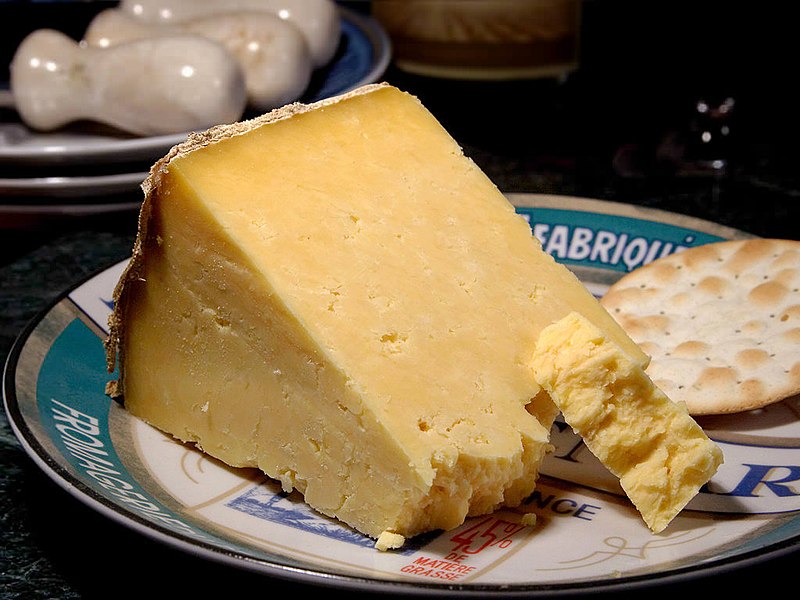
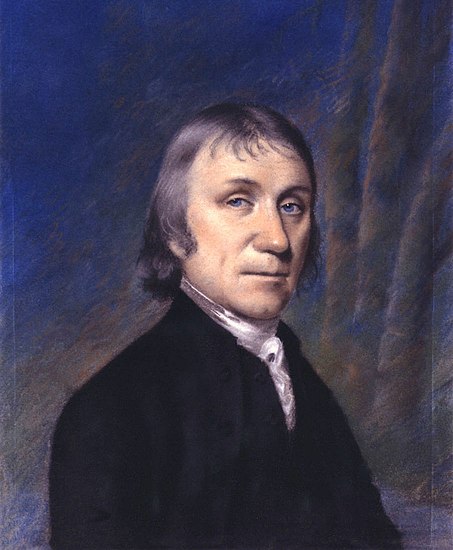









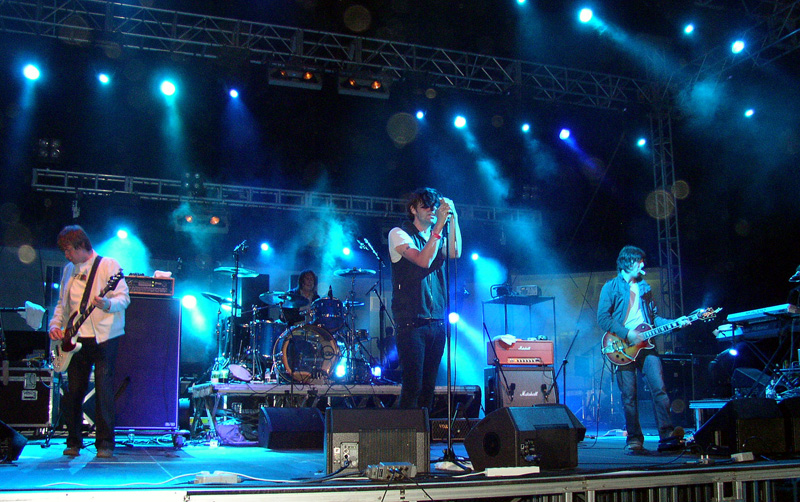
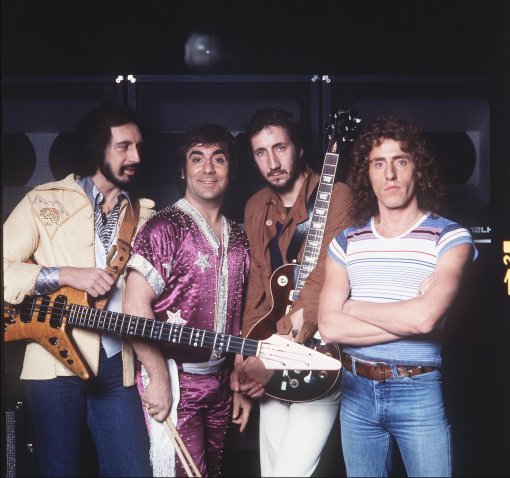










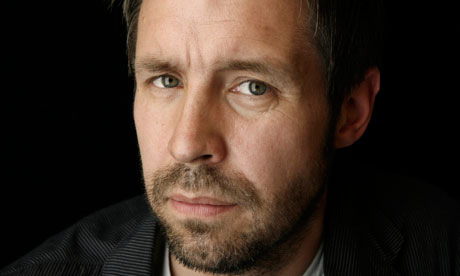
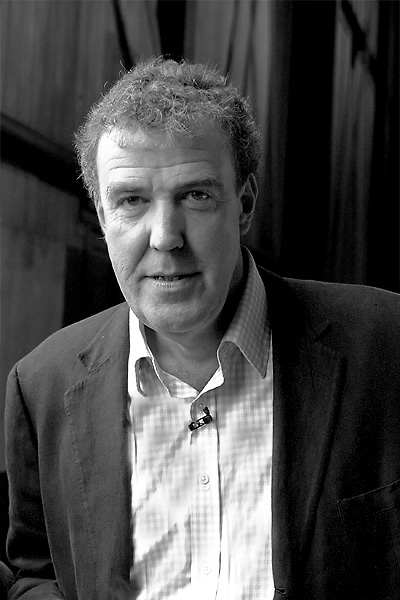










.jpg/450px-2010_Women's_British_Open_%E2%80%93_Melissa_Reid_(4).jpg)
.jpg/425px-Jack_O'Connell_(Cropped).jpg)
